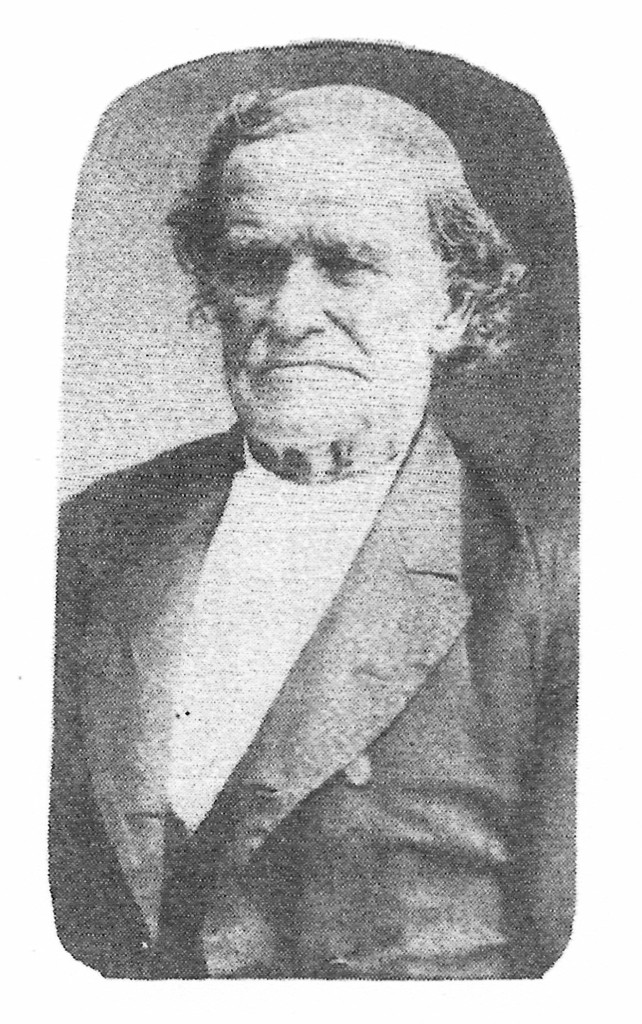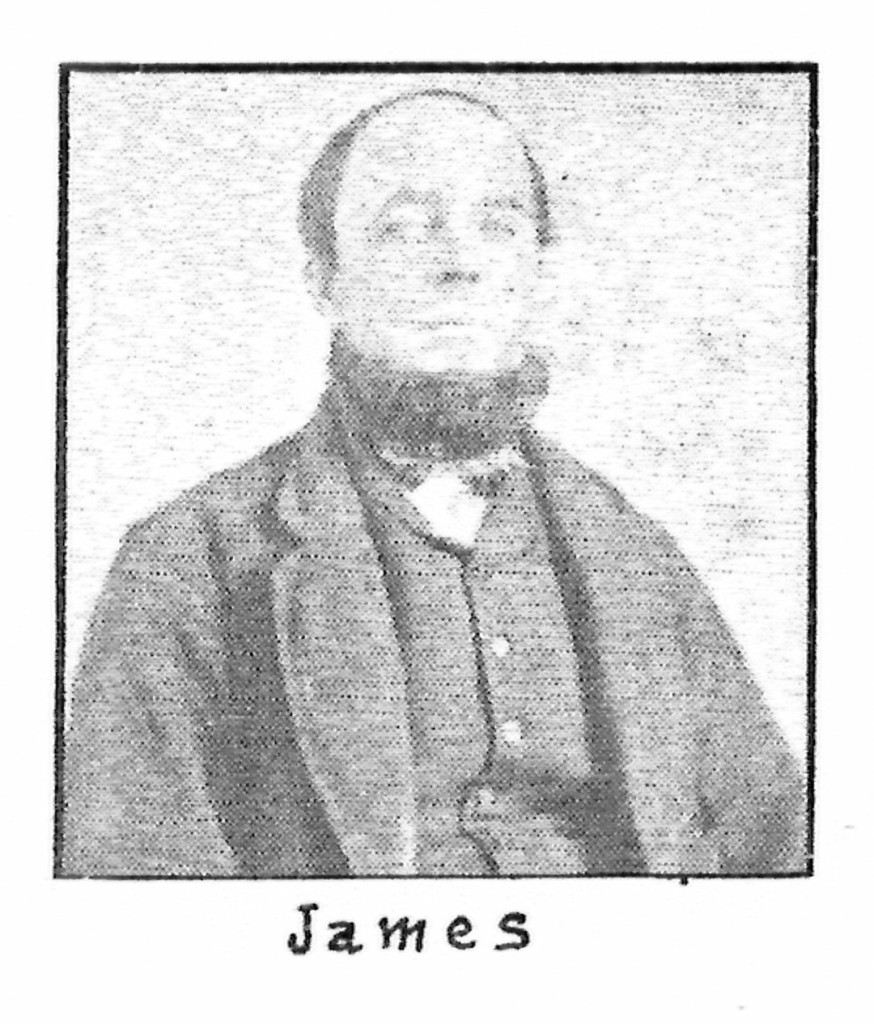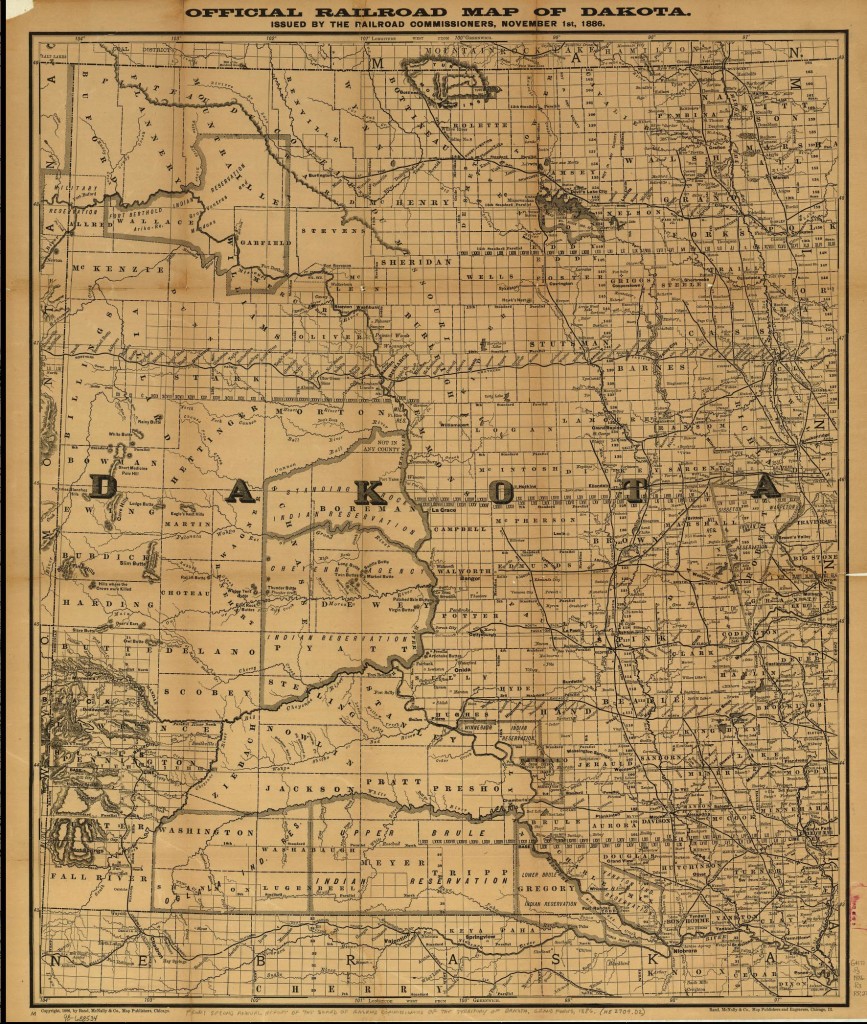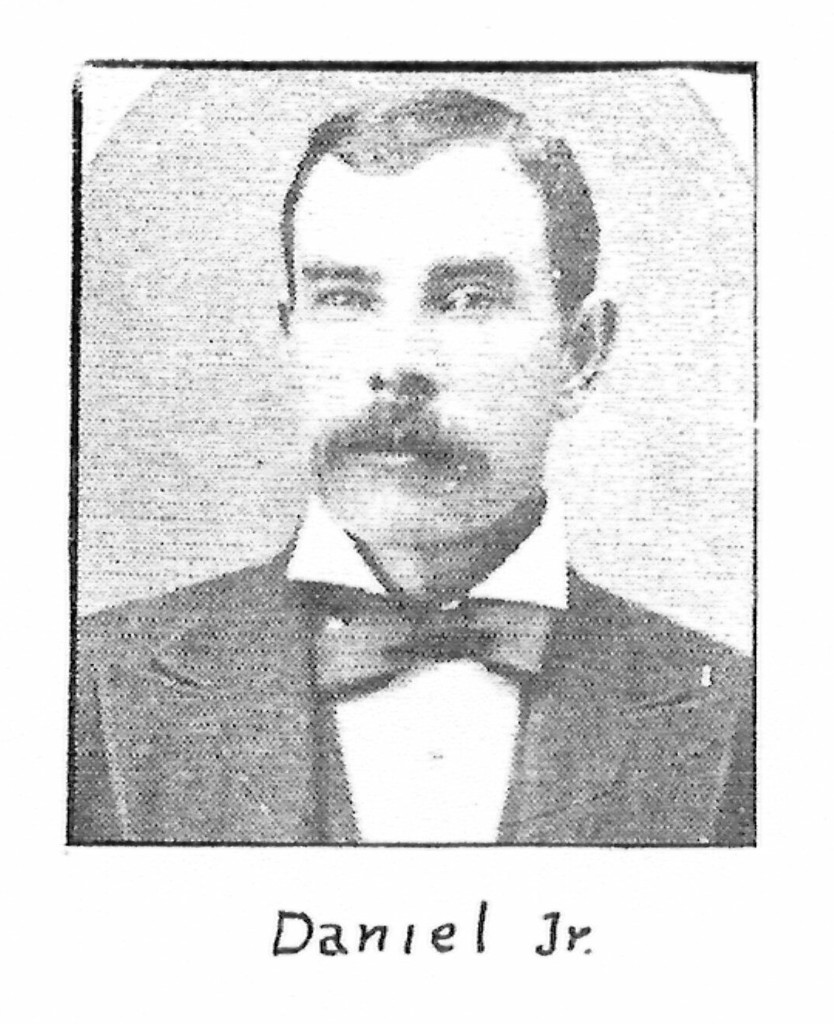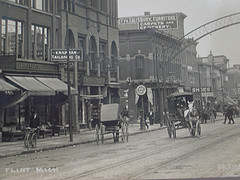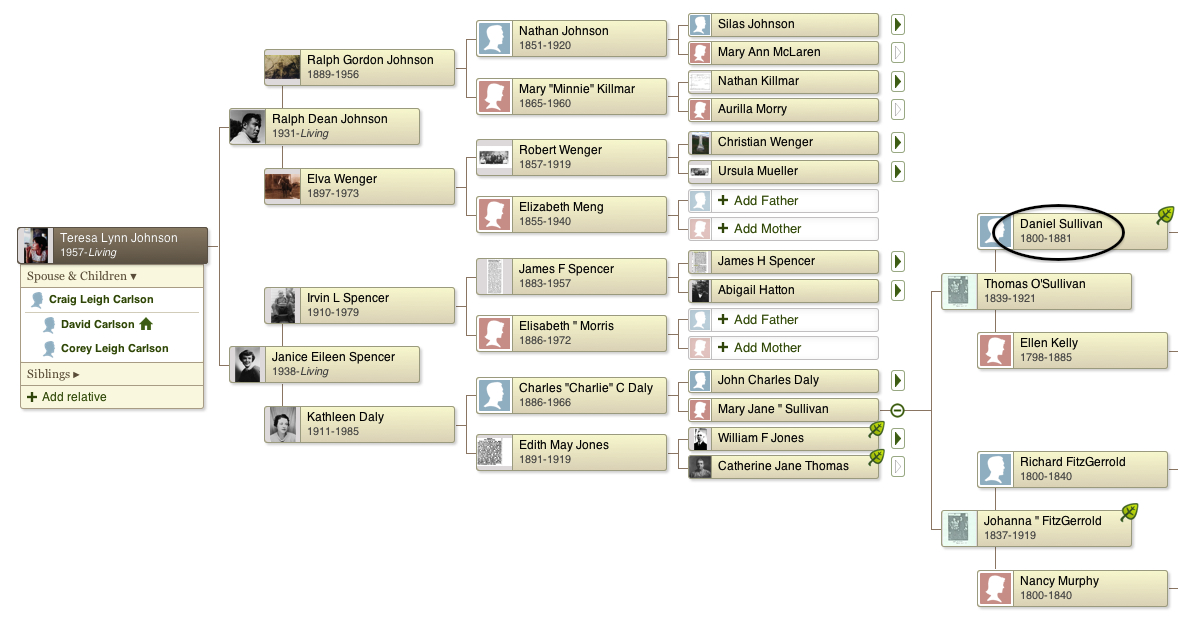Daniel Sullivan was born in Ireland on December 30, 1800. On January 23, 1823 he married Ellen Kelly in County Cork, Ireland. Together they had five children: James (1824-?), Cathrine (1826-1880), Ann (1833-?), Daniel (1836-?), and Thomas (1839-1921).
From Our Family: Daly-Sullivan Family History:
Daniel Sullivan was born Dec. 30, 1800, probably in County Cork. His grandchildren remembered that he and his wife, Ellen, talked to each other in the Irish language.
In the pages of his old Bible is an old piece of paper, sewn to a piece of cloth to hold it together. There is writing in longhand and Latin on it. The ink is faded, but you can make out the date: 19th Jan. 1823, which was their wedding day. Their own names are not there, but the names William Kelly, May Sullivan, and Johannah Sullivan are on it. These may have been brother and sisters of the bride and groom, and witnesses to the wedding. Kilworth is mentioned, which is a town in Cork County. The church there has no records that far back.
In this same Bible their marriage and the birth of their five children are recorded in Daniel’s handwriting. He wrote it Sullivan (not O’Sullivan) as he seems to have written it later in his life.
We do not know how long they lived in Ireland, but the two oldest children, James and Cathrine, were probably born there. They moved to London, England, where Daniel taught school till they decided to come to America.
The first stop here that we know of was Detroit, Michigan. After staying there a while they went on to Flint, Michigan in a covered wagon. There were no roads through the wilderness, and there were Indians who were friendly toward them. They even gave Daniel an Indian name. Ellen lost one of her shoes on the trip, and for over a year she had to wear Indian moccasins. She did not see another white woman for a year.
When they came to Flint, it consisted of three shanties and one log house. The first white man’s house had been built there in 1819 by a man named Jacob Smith.
In 1834, Daniel Sullivan started the first school in Genessee County in the Flint settlement. It was on the bank of the Flint River near where the Hamilton Dam was later located. His first pupils were his own two children and the children of Todds, McCormacs, Stevens, Cronks, and Stows. There were twelve in all, and the parents paid him ten cents per pupil, per week. This was not enough to support a family, so the next year he turned the job over to a man named Aaron Hoyes and started a general store.
George Beahan Daly told of stopping on his way to work to talk to Daniel at the door of his store. Daniel often mentioned his admiration for Matthew Beahan, George’s grandfather. He used to say that Matthew Beahan was the smartest Irishman who ever struck Flint.
Daniel’s sons all were storekeepers in Flint. Daniel Jr. and Thomas ran a furniture store till Thomas went to Dakota. James ran a general store there for many years.
When Thomas O’Sullivan brought his family to his claim in Dakota Territory in 1881, he brought his parents with him. So at the age of 80, Daniel pioneered again, this time to raw prairie instead of woods. They came by train to Watertown and by covered wagon to a claim east of Columbia.
They stayed through the summer and then went back to Muskegon, Michigan where Thomas worked as a pattern maker in a foundry. It was in Muskegon that Daniel died on February 9, 1881, at the age of 81. His grave is there. Ellen lived on with Thomas’s family, coming back to Dakota with them in 1883. Death came to her in March 1885. She was buried by the sod church and later moved to the Columbia cemetery.
Sometime around 1833, the Sullivans emigrated to America. By 1834 they were living in Flint, Genesee, Michigan. Here, Daniel started the first school in Genesee County. The family lived in Flint for the next forty years.
Daniel passed away in Muskegon, Michigan on February 9, 1881.
